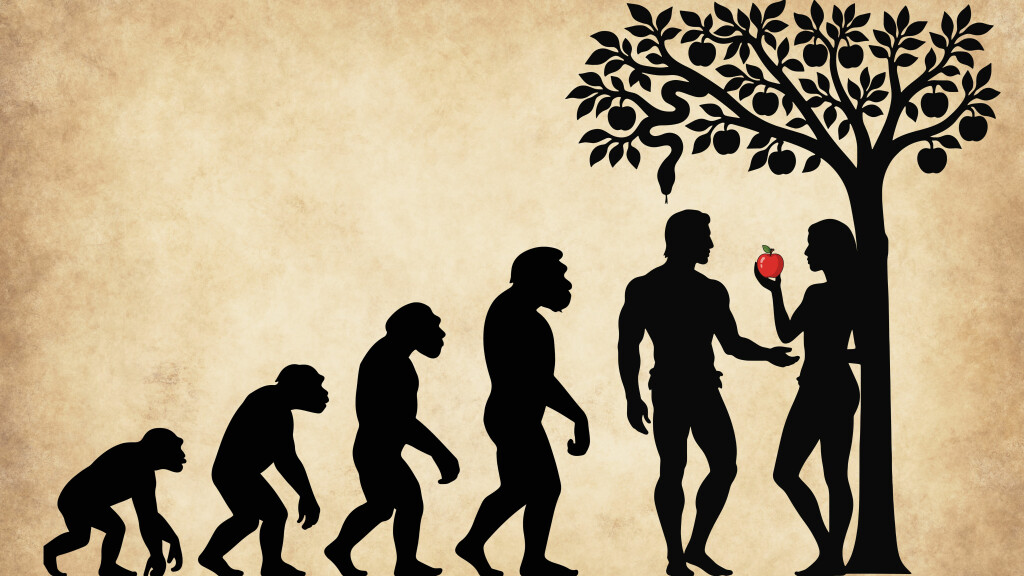
The Archaeopteryx
04.10.18 | Articles, Dinosaurs
Read Time: 7 minutes and 22 seconds.
 1. First discovered in 1861, the Archaeopteryx ("early wing") is the paleontologist's Rosetta stone, seemingly providing the perfect evidence for the otherwise elusive transition creatures that should fill the rocks with their fossil remains. Seven specimens are claimed to exist. As we shall see, only the first, second, and third specimens are objects of suspicion; the remaining specimens consist merely of reclassified reptiles. In 1985, charges were made that the second, 1861 specimen held at the British Museum of Natural History was a fake. We will examine the history of the discovery of all these specimens, the charges against the British Museum specimen and take a careful look at the published data concerning the third specimen. Most of the evidences point to the first three specimens being fraudulent and the remaining four being reptiles as they were formerly classified. The importance of the Archaeopteryx is that, since its discovery in the last century, it has become the textbook example of a transition and thus proof of evolution.
1. First discovered in 1861, the Archaeopteryx ("early wing") is the paleontologist's Rosetta stone, seemingly providing the perfect evidence for the otherwise elusive transition creatures that should fill the rocks with their fossil remains. Seven specimens are claimed to exist. As we shall see, only the first, second, and third specimens are objects of suspicion; the remaining specimens consist merely of reclassified reptiles. In 1985, charges were made that the second, 1861 specimen held at the British Museum of Natural History was a fake. We will examine the history of the discovery of all these specimens, the charges against the British Museum specimen and take a careful look at the published data concerning the third specimen. Most of the evidences point to the first three specimens being fraudulent and the remaining four being reptiles as they were formerly classified. The importance of the Archaeopteryx is that, since its discovery in the last century, it has become the textbook example of a transition and thus proof of evolution.
2. The word "Dinosaur" was coined in 1840 by Richard Owen; the remains of these creatures are found on every continent, and they are said to have lived in the Cretaceous Age, that is, 140 to 65 million years ago. There are two broad classes of dinosaur: the ornithischian or "bird-hipped" type, most of whom walked on two legs, e.g., T. rex, and the saurischian or lizard-hipped type that walked on four legs. Not all dinosaurs grew to be the very large creatures; many remained quite small, even chicken-sized. In 1833, French paleontologist Geoffroy Saint-Hilaire first proposed that the birds had evolved from the ornithischian dinosaurs.
Writing in his `Origin of Species' in 1859, Charles Darwin said that the fossil record should be full of intermediate varieties of creatures (transitional types) but lamented that geology had not yet provided any. He confessed that, "this is the most obvious and gravest objection which can be urged against my theory." He then suggested the explanation was due to "the extreme imperfection of the geological record."
3. This statement seems to have provided a charter for fossil forgers because within months of the publication of the German edition of Darwin's `Origin (in 1861), an impression of a single, modern-looking feather was discovered in the Jurassic limestone of Solnhofen quarry, southern Germany. Details of its discovery were never adequately given, but because of the associated fossils found in the same strata, it was dated at 150 million years and called Archaeopteryx lithographica; the limestone from this quarry was used to make lithographic plates for the printing industry. More commonly, the specimen is referred to as, "von Meyer's feather." The sale of this fossil to the Berlin and the Munich museums was negotiated by Dr. Karl Haberlein, medical officer for the district of Pappenheim near Solnhofen.
Less than two months later, in 1861, another Archaeopteryx appeared from the same quarry. This was about as big as a pigeon, had remarkably clear feather impressions in the wing and tail areas, and was headless. Moreover, it contained a very large furcula or wishbone but England's T. H. Huxley was most suspicious of it, and neither he nor Charles Darwin would accept this specimen as a transition. Again, Dr. Haberlein negotiated the sale to the highest bidder; this time it was the British Natural History Museum and is known as the "London specimen." There had been complaints concerning this fossil from German professor Andreas Wagner, who claimed it was nothing more than a Compsognathus with feathers. He had studied this chicken-sized dinosaur and had been responsible for naming it.
4. The third Archaeopteryx appeared from the same quarry in 1877 and this time it was complete with the head, and it had teeth, which placed it nicely between the reptile and the bird. Its sale was negotiated by Dr. Karl Haberlein's son, Ernst Haberlein, who demanded a stupendous price. The specimen finished in the Berlin Museum is usually referred to as the "Berlin specimen" and is the textbook example.
5. Textbooks often speak about "many other examples," and by this, they mean the remaining four specimens. The following is their description: A poorly preserved specimen discovered in 1956 and classified as an Archaeopteryx; it is known as the Maxberg specimen, and was in the hands of a private collector but has disappeared in recent years. A specimen discovered in 1855, displayed in the Teyler Museum and known as a pterosaur until 1970 when it was reclassified as an Archaeopteryx; it is known as the Haarlem specimen. A specimen discovered in 1951, classified as a Compsognathus longipes and reclassified as an Archaeopteryx in 1973; it is known as the Eichstatt specimen. A specimen in another private collection was classified as an Archaeopteryx in 1988 and referred to as the Solnhofen specimen. It should be emphasized that none of these four specimens show feather impressions, so-called fused clavicles (furcula or wish-bone), or any other avian characteristics.
6. Charges of Hoax. Dr. Lee Spetner of the Weizmann Institute, Israel, working in cooperation with British astronomer Sir Fred Hoyle, long suspected that the London specimen was a fake and finally got a chance to examine the actual specimen at the British Museum. They were not allowed to touch the specimen, merely photograph it. No mainstream science journal would publish their findings, and they had to publish them in The British Journal of Photography. Briefly, Hoyle and Spetner charged that the London specimen was actually that of a Compsognathus to which impressions of modern feathers had been added. Only the London and Berlin specimens consist of bone and feather impressions.
7. Examination of the London Specimen. Hoyle and Spetner's principal findings were as follows: The tail feathers lie in a depression in the slab; there is no corresponding raised area in the counter-slab. The museum maintained that their staff had excavated this area to reveal the feathers, but Richard Owen's illustration published in 1864 showed these feathers, and he said nothing about any excavation work.
8. Examination of the Berlin Specimen. None but the certified believer can expect to have the opportunity to examine the actual specimen, however, the published photographs taken over the years are almost as revealing. Carl Vogt photographed this specimen shortly after its discovery in 1877, and Professor C. H. Hurst photographed this same specimen in 1893. Both photographs are identical. Hurst pointed out that the popular 1887 textbook illustration had bent primary quill feathers (some bent by 40 degrees!) and that these originate in the ulna or fore-arm, whereas on the fossil,l those same quill feathers were straight and originate in the manus or "hand." Controversy arose in which Hurst further pointed out that not only did Professor Dames' 1884 description of the fossil state that the primary quills were attached to the longest finger, but that bent feathers would in any case be useless for flight. W. D. Pyecraft of the British Museum also defended the straight feathers, saying that most modern birds have straight feathers and they do originate in the hand. Incredibly, every modern photograph of the Berlin specimen now shows these quill feathers as bent and originating in the fore-arm.
According to the published photographs, the change from straight to bent feathers took place between 1893 and 1923. If indeed this was a forgery, then the forger had no choice but to use straight quill feathers and correctly place them originating from the manus. It seems that later, someone at the Berlin Museum mistakenly thought that quill feathers originated in the ulna and illustrated them that way. Since that time, the fossil itself has somehow been modified so that the incorrect illustrated version persists even in modern photographic reproductions.
9. Feathers are the true distinguishing feature of birds. Feather impressions are only found on the first three specimens i.e. von Meyer's, the London and the Berlin specimens; all three were discovered in the same area within a period of 17 years and passed through the hands of one man, Dr. Karl Haberlein; Haberlein made a vast sum of money by their sale to national museums. The remaining four specimens are the result of fossils being reclassified in this century and contain no signs of feather impressions or a furcula.
10. The furcula or wishbone is only present in the London specimen. To this day, no one is quite sure of the function of the furcula, while it is thought to have evolved by the fusion of the clavicles or collar bones of the ancestor of the bird. The furcula in the London specimen actually looks nothing like a wishbone but more like a bent sausage, while Huxley seemed to have taken delight in pointing out that it was "upside-down." The great bird expert, Professor John Ostrom, maintains that a furcula can be seen in the Maxberg specimen but admits that others who have examined this specimen did not see it; the specimen has since disappeared. Ostrom has also noted that the presence of a furcula seems paradoxical together with the apparent absence of a sternum in every one of the Archaeopteryx specimens.
11. Finally, Gerhard Heilman, writing in 1926, produced an impressive list of the similarities between the Archaeopteryx and the Compsognathus; for example, there were nine major points of similarity between the head of the Archaeopteryx and that of the Compsognathus alone. Nevertheless, he dismissed the connection by his belief that the Compsognathus did not possess a furcula.
However, this negative evidence has since been removed by the more recent work of John Ostrom, who has demonstrated that the Compsognathus did indeed have a furcula. Birds have a backward-facing pubis bone, but all the dinosaurians have a forward-facing pubis bone. This is a major point of difference between birds and dinosaurs, but it turns out that the Compsognathus is probably unique among the dinosaurians since its pubis bone faces backwards like the birds. Now, with every detail between the Archaeopteryx and the Compsognathus corresponding exactly, one may wonder how much longer this obvious hoax can be maintained?
12. In the past decade or so, the belief that the dinosaur is the bird’s ancestor has indeed been maintained by the fossil search in China. Every so often, a new discovery is given publicity by the media and especially by National Geographic magazine. These fossil trophies fetch large sums of money from Western museums. So far, at least one of these purported intermediate fossils from China has proven to be a fraud; there may well be others waiting for exposure.
Footnotes:
Photo: The Berlin archaeopteryx specimen. Courtesy of H. Raab. (CC A-SA 3.0 Unported)
© 2021 Creation Moments. All rights reserved.



